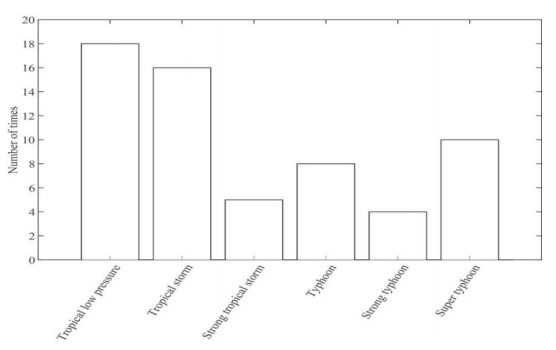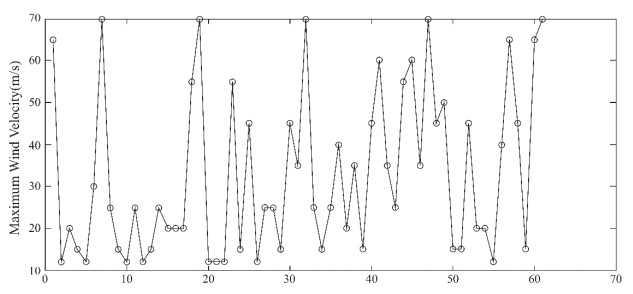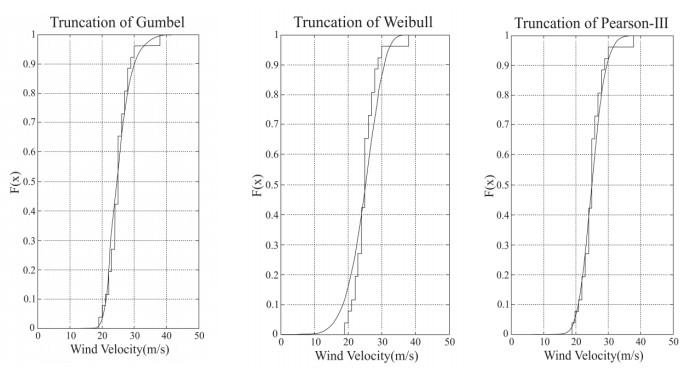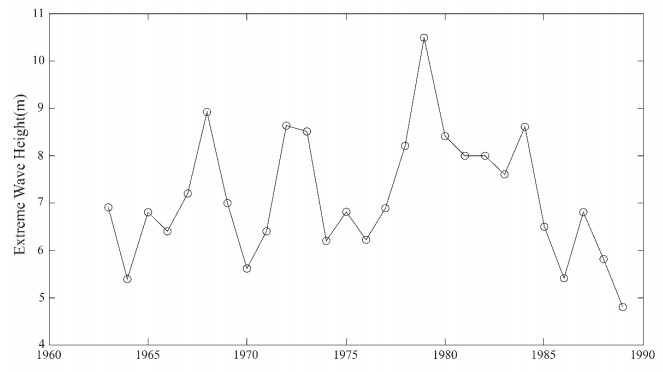1.
Introduction
The Hunter-Saxton (HS) equation reads
where u(x,t) depends on a time variable t and a space variable x, κ is a positive constant. This equation was derived as a model for propagation of orientation waves in a massive nematic liquid crystal director field [1]. In fact, it can be regarded as a short wave limit of the well known Camassa-Holm equation [2,3].
The two-component Hunter-Saxton (2-HS) equation [1] is
where u(x,t) and ρ(x,t) depend on variables t and x, σ,κ are positive constants. The 2-HS equation has attracted much attention and it has been studied extensively and some results were obtained, we can see [4,5].
Meanwhile, there is a generalized 2-HS system [6] as follow:
where α(α≠1),κ are constants. The model with (α,κ)=(−1,−1) in system (1.3) appeared initially in the work of Lenells [7]. The author showed that system (1.3) is the geodesic equation on a manifold K which admits a K¨ahler structure. The blow-up phenomena of system (1.3) was investigated in [4,8].
Our goal is to study exact solutions of system (1.3) by applying classical Lie group method [9,10,11,12,13,14]. Firstly, the vector field for the system (1.3) will be given by Lie symmetry analysis. Secondly, similarity variables and its symmetry reductions equations are obtained. Thirdly, by solving the reduced equations, some exact solutions of the system (1.3) will be presented. Finally, we give a conservation law of system (1.3).
2.
Lie symmetry analysis of the system (1.3)
First of all, let us consider a one-parameter Lie group of infinitesimal transformation:
with a small parameter ϵ≪1. The vector field associated with the above group of transformations can be written as
where the coefficient functions ξ(x,t,u,ρ),τ(x,t,u,ρ),ϕ(x,t,u,ρ) and ψ(x,t,u,ρ) of the vector field are to be determined later.
If the vector field (2.1) generates a symmetry of the system (1.3), then V must satisfy the Lie symmetry condition
where pr(3)V,pr(1)V denote the third and the first prolongation of V respectively, and Δ1=uxxt+uuxxx+(1−α)uxuxx−κρρx, Δ2=ρt+uρx−αuxρ for system (1.3). Expanding (2.2), we find that the coefficient functions ξ,τ,ϕ and ψ must satisfy the symmetry condition
where ϕ,ψ,ϕx,ψx,ψt,ϕxx,ϕxxx,ϕxxt are the coefficient functions given by
where Dx,Dt are the total derivatives with respect to x and t respectively.
Substituting (2.4) into (2.3), combined with system (1.3) and setting the coefficients of the various monomials in u and v and their partial derivatives equal to zero one obtains the determining equations for the symmetry group of (1.3) as follows
Solving these determining equations yields
where F1(t),F2(t) are arbitrary functions of t, C1,C2,C3 and C4 are arbitrary constants.
Thus, the Lie algebra of infinitesimal symmetries of system (1.3) is spanned by the following vector fields
where V1 and V2 are the vector fields corresponding to the arbitrary functions F1(t) and F2(t) respectively.
The commutation relations of Lie algebra determined by Vi(i=1,2,⋯,6), which are shown as
It is obvious that the vector fields Vi(i=1,2,⋯,6) are closed under the Lie bracket.
3.
Symmetry reductions
In this section, we will get similarity variables and its symmetry reductions. By solving the reduced equations, some exact solutions of the system (1.3) will be presented.
Based on the infinitesimals (2.6), the similarity variables are found by solving the corresponding characteristic equations
Case 1 Let C1=C2=F1(t)=0, C3(≠0) and C4 be arbitrary constants, F2(t) is an arbitrary functions of t, then by solving the characteristic equation one can get the similarity variables
and the group-invariant solution is
Substituting the group-invariant solution (3.1) into system (1.3), we reduce equation (1.3) to the following ODE:
where f′=df/dω,g′=dg/dω.
Case 2 Let C1,C3 be arbitrary non-zero constants, C2=C4=F1(t)=F2(t)=0, then by solving the characteristic equation one can get the similarity variables
and the group-invariant solution is
Substituting the group-invariant solution (3.3) into system (1.3), we reduce (1.3) to the following ODE:
where f′=df/dω,g′=dg/dω.
Case 3 Let F1(t)=kt,F2(t)=0, C1,C2,C3,C4 and k be constants which satisfy C2−αk≠0 and k+C1+C2≠0, then by solving the characteristic equation one can get the similarity variables
and the group-invariant solution is
Substituting the group-invariant solution (3.5) into system (1.3), we reduce (1.3) to the following ODE:
where f′=df/dω,g′=dg/dω.
4.
Exact solutions
In this section, we will derive the solutions of system (1.3) by using the symbolic computation [15,16,17]. Suppose that the solution of equation (3.2) is in the form
where F(ω) expresses the solution of the following generalized Riccati equation
and r,p,q are real constants. Substituting (4.1) along with (4.2) into (3.2) and collecting all terms with the same power in Fi(i=0,1,⋯,7) and setting the coefficients to zero yields a system of algebraic equations. Solving the algebraic equations and we can have the following results
with b2,p,q,r,C3,C4 are constants and κ is a positive constant.
The solutions of equation (4.2) are listed as follows:
(a) When p2−4qr>0 and pq≠0 (qr≠0),
where A,B are arbitrary constants.
(b) When p2−4qr<0 and pq≠0 (qr≠0),
where A,B are arbitrary constants.
(c) When r=0 and pq≠0,
where C is an arbitrary constant.
(d) When p=r=0 and q≠0,
where C is an arbitrary constant.
Substituting (4.3) into (4.1) and (3.1), then we can obtain the following different exact solutions of system (1.3):
(a1) If Δ=p2−4qr>0 and pq≠0 (qr≠0), then the solutions of system (1.3) with α=2 can be derived as
where ω=x−∫F2(t)C3dt.
If we take F(t)=F2(t)+C4C3,√Δ=2c1(c1>0),b=b24q2, then the above solution can be expressed as a simple form as
where ω=x−∫F(t)dt, and c1(>0),b,κ are constants.
Similarly, we can derive the other solutions of system (1.3) as
where A,B are arbitrary constants.
where B2−A2>0.
(a2) When Δ=p2−4qr<0 and pq≠0 (qr≠0), if we denote F(t)=F2(t)+C4C3,√−Δ=2c1(c1>0),b=b24q2, then the solutions of system (1.3) with α=2 can be derived as
where A,B are arbitrary constants and A2−B2>0.
where A2−B2>0.
(a3) When r=0 and pq≠0, if we denote F(t)=F2(t)+C4C3,b=b24q2, then the solutions of system (1.3) with α=2 can be derived as
where ω=x−∫F(t)dt, F(t) is an arbitrary function and b,C are constants.
(a4) When p=r=0 and q≠0, if we denote F(t)=F2(t)+C4C3,b=b24q2, then the solution of system (1.3) with α=2 can be derived as
where ω=x−∫F(t)dt, F(t) is an arbitrary function and b,C are constants.
In order to show the properties of the above solutions visually, we plot the 2D-graphs of some typical solutions. Some wave figures are given as follows (Figures 1–5):
For the solution (4.5), if we take the integration constant as 0 in ω=x−∫F(t)dt, then we plot the solution for the plus sign in u1 as
For the solution (4.6), if we take the integration constant as 0 in ω=x−∫F(t)dt, then we plot the solution for the plus sign in u2 as
For the solution (4.8), if we take the integration constant as 0 in ω=x−∫F(t)dt, then we plot the solution for the plus sign in u4 as
For the solution (4.10), if we take the integration constant as 0 in ω=x−∫F(t)dt, then we plot the solution for the plus sign in u6 as
For the solution (4.17), if we take the integration constant as 0 in ω=x−∫F(t)dt, then we plot the solution for the plus sign in u13 as
Remark 1 If we take F(t) as a constant, then all of the above solutions of system (1.3) are traveling wave solutions.
Remark 2 For the reduced equations (3.4) and (3.6), there exist a power series solutions [18,19]. We omit the details here for brevity.
5.
Conservation law
In this section, we use the direct multiplier method [20] to derive a conservation law for system (1.3). The zero-order multipliers Λ1(t,x,u,ρ), Λ2(t,x,u,ρ) for the system (1.3) are determined by
where δδu,δδρ are Euler-Lagrange operators defined by
Expanding (5.1) and splitting with respect to derivative of u,ρ, we obtain the following determining equations
Then we obtain the solution
where A is an arbitrary constant, H(t) is an arbitrary functions with respect to t. From the solution (5.4), we can see that system (1.3) has one zero-order multiplier in the form of Λ1=H(t), Λ2=ρ−1+αα. So a conservation law of system (1.3) is
6.
Conclusions
In this paper, a generalized 2-HS system is investigated by using the classical Lie group method. First, Lie symmetry analysis was performed for the generalized 2-HS system, and its infinitesimal generator, geometric vector fields and commutation table of Lie algebra were obtained. Then, all of the similarity variables and its symmetry reductions of this equation are obtained. And by solving the reduced equations, some new exact solutions including traveling wave solutions of this generalized 2-HS system are constructed successfully. These are new solutions for the generalized 2-HS system. Finally, a conservation law of the generalized 2-HS system are shown by using the multiplier method.
Acknowledgments
This work is supported by the National Natural Science Foundation of China (No.11461022) and Applied Basic Research Foundation of Yunnan Province (Nos. 2018FH001-013 and 2018FH001-014), the Science Research Foundation of Yunnan Education Bureau (No. 2018JS479) and the Second Batch of Middle and Young Aged Academic Backbone of Honghe University (No. 2015GG0207).
Conflict of interest
The authors declare that there are no conflict interests regarding the publication of this paper.










 DownLoad:
DownLoad:












